Birds
Media
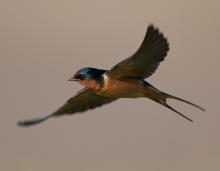
Species Types
Scientific Name
Hirundo rustica
Description
Streamlined, agile fliers with forked tails, barn swallows build cup-shaped nests out of mud affixed to protected areas on the walls of barns and under bridges.
Media

Species Types
Scientific Name
Petrechelidon pyrrhonota
Description
Cliff swallows fly in swarms around their clusters of juglike mud nests attached to overpasses, bridges, and other structures. Note the whitish forehead, buffy rump patch, and chestnut throat.
Media

Species Types
Scientific Name
Gallinago delicata
Description
Wilson’s snipe, formerly called the common snipe, is a migratory game bird in Missouri. Like its relative the woodcock, this member of the sandpiper family is not usually seen on mudflats. It prefers swamps and wet, grassy areas.
Media
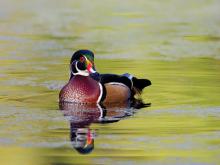
Species Types
Scientific Name
Aix sponsa
Description
The wood duck is one of the world's most beautiful waterfowl. It is equally famous for being a cavity nester in hollow trees, sometimes 60 feet above the ground and a mile away from water.
Media

Species Types
Scientific Name
Anas platyrhynchos
Description
The mallard is probably the most familiar duck in all of North America. The male has a green head and chestnut breast. Both sexes have a blue speculum (wing patch) bordered on both sides by white.
Media

Species Types
Scientific Name
Phasianus colchicus
Description
Long-tailed and chickenlike, the ring-necked pheasant was introduced to America in the 1880s as a gamebird. It’s present in the northern quarter of the Missouri and in parts of the Bootheel.
Media
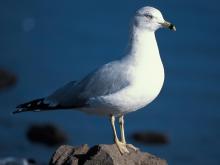
Species Types
Scientific Name
Larus delawarensis
Description
The ring-billed gull is Missouri’s most common gull. Adults can be told from our other most common gulls by their yellow legs and yellow bill with a black ring near the tip.
Media
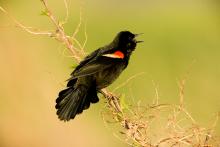
Species Types
Scientific Name
Agelaius phoeniceus
Description
These crimson-shouldered residents of marshes, wet meadows and weedy roadside ditches are well-known by most rural Missourians. Their “konk-o-REEE” song likely emanates from every pond in Missouri.
Media
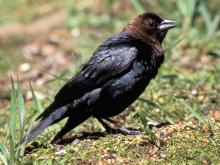
Species Types
Scientific Name
Molothrus ater
Description
The brown-headed cowbird never builds a nest of its own. Instead, it lays eggs, one at a time, in the nests of other birds. Each cowbird is raised by unwitting foster parents.
Media

Species Types
Scientific Name
Dolichonyx oryzivorus
Description
The male bobolink is the only North American bird that has light feathers above and dark feathers below. In fall and winter, the male resembles the buffy and brown-streaked female.
See Also







Media

Species Types
Scientific Name
Hemaris diffinis
Description
The snowberry clearwing is a moth that confuses people because it looks like a bumblebee and flies like a hummingbird!
Media

Species Types
Scientific Name
Hyles lineata
Description
The white-lined sphinx moth sometimes confuses people because it flies, hovers, and eats from flowers like a hummingbird. The adults often fly during daylight hours as well as in the night and are often found at lights.
Media

Species Types
Scientific Name
Darapsa myron
Description
The Virginia creeper sphinx moth is common in woods and brushy areas and comes to lights at night. The larvae eat Virginia creeper and grape leaves.
Media

Species Types
Scientific Name
Perimyotis subflavus (formerly Pipistrellus subflavus)
Description
Tri-colored bats, formerly called eastern pipistrelles, are relatively small and look pale yellowish or pale reddish brown. The main hairs are dark gray at the base, broadly banded with yellowish brown, and tipped with dark brown.
Media

Species Types
Scientific Name
Myotis grisescens
Description
Gray myotises are difficult to distinguish from other mouse-eared bats. A key identifying feature of the gray myotis is that its wing is attached to the ankle and not at the base of the toes. It’s an endangered species.
Media

Species Types
Scientific Name
Myotis lucifugus
Description
The little brown myotis (little brown bat) is one of our most common bats, but populations are declining. White-nose syndrome has taken a heavy toll in northeastern states. This species is now listed as vulnerable across its range.
Media

Species Types
Scientific Name
Myotis sodalis
Description
The Indiana myotis, or Indiana bat, summers along streams and rivers in north Missouri, raising its young under the bark of certain trees. It is an endangered species.
About Birds in Missouri
About 350 species of birds are likely to be seen in Missouri, though nearly 400 have been recorded within our borders. Most people know a bird when they see one — it has feathers, wings, and a bill. Birds are warm-blooded, and most species can fly. Many migrate hundreds or thousands of miles. Birds lay hard-shelled eggs (often in a nest), and the parents care for the young. Many communicate with songs and calls.





















